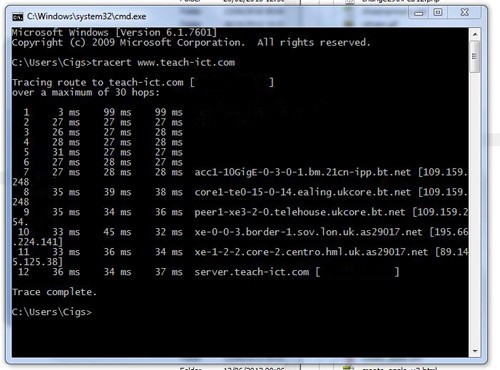2. Command Line Interface
A Command Line Interface allows the user to interact directly with the computer system by typing in commands (instructions) into a screen which looks similar to the one below:

You cannot just type in any kind of instruction of course, because the computer will only react to a definite set of words.
These commands are very specific, for example in DOS you could type in:
copy c:\item.txt d:\
That tells the machine to copy the file 'item.txt' that resides in the root directory of drive C: into the root directory of drive D:\
Many commands have what are called 'switches'. These are extra parameters or flags which add extra functionality to the command. For example:
Before Windows was developed, this type of user interface was what most people used to get the computer to follow instructions.
It is still around though, for example a technician setting up a server in a data centre might use a command line interface or a mainframe administrator setting up a configuration file.
The main disadvantage of a command line interface is that the person must have detailed knowledge of the command that can be used.
challenge see if you can find out one extra fact on this topic that we haven't already told you
Click on this link: Command Line Interface
